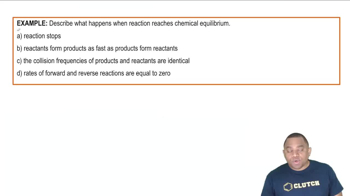Here are the essential concepts you must grasp in order to answer the question correctly.
Supersaturation
A supersaturated solution contains more solute than can typically be dissolved at a given temperature. This occurs when a solute is dissolved in hot solvent and then allowed to cool slowly, preventing immediate crystallization. When the solution is disturbed or allowed to sit, excess solute may crystallize out, leading to a saturated solution where the solute concentration is at its maximum for that temperature.
Recommended video:
Types of Aqueous Solution Example
Saturation Point
The saturation point is the maximum concentration of solute that can dissolve in a solvent at a specific temperature and pressure. When a solution reaches this point, any additional solute will not dissolve and will instead precipitate out. In the context of the question, once excess sucrose crystallizes out, the remaining solution reaches this saturation point.
Recommended video:
Dynamic Equilibrium
Dynamic equilibrium in a solution occurs when the rate of solute molecules leaving the solid phase (crystals) equals the rate of solute molecules entering the solid phase from the solution. This balance means that the concentration of solute remains constant over time. In the case of the sucrose solution, once crystallization has occurred, the system may reach dynamic equilibrium where the rates of hydration and attachment of sucrose molecules are equal.
Recommended video:
Chemical Equilibrium Example




